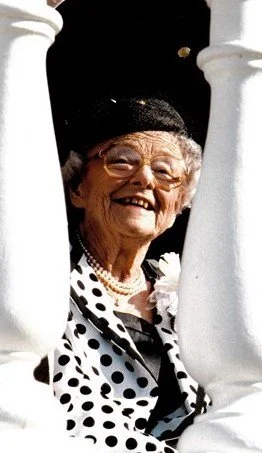Who is Harriet Island Named After?
There’s an island just across the Mississippi river from downtown Saint Paul called Harriet Island. Well, at least it used to be an island, but its back channel was filled in years ago. Minnesotans don’t talk much about the island’s namesake, Harriet Bishop, very often and that’s probably because she was a bit of an uptight %$#@*. She was an east coast snob, a school marm, a tee-totaler, a bible beating baptist and a racist. So how on earth did she get an island named after her?
Well, she was also really, really brave, extremely smart, a tireless worker, and absolutely beloved by early Saint Paul.
Harriet was recruited to Saint Paul in 1847 as the first public (that is to say non-missionary) school teacher in the state. She left well-established Vermont and arrived in a muddy, disorganized village that, at the time, was home to only about twenty families. Harriet moved in with John Irvine and his family, since her room and board were part of her pay (and there was nowhere else for her to live).
Her classroom was in a former blacksmith’s hut and was open to any child, not just white children, and included several Dakota children. At first, she spent a lot of time teaching her students the basics of bathing and washing hands after using the outhouse. She was immediately popular and her class grew quickly - as did the Sunday school she started - but she had to do most of her teaching through an interpreter since most of the children didn’t speak English.
Harriet helped found the First Baptist Church, the Minnesota Historical Society, the Women’s Temperance League, and worked for Women’s Suffrage. She also founded the Protestant Home (first known as the Home for the Friendless) providing housing for injured veterans, the elderly and orphans after the Civil War.
She faced betrayal when she was jilted by her fiance, James Humphrey in 1851. He was seven years younger than her and he was convinced by his sister (and supposedly Harriet’s friend) to break off the engagement - even after he had built a home for them to live in. The “honeymooners’ cottage” still stands in Irvine Park.
(In an amazing twist of fate, the two houses connected to Harriet - the Irvine House and the Humphrey cottage - were combined into one dwelling by Charles Willis in 1886. The cottage, at the front, is the oldest frame house that is still standing in its original location in Saint Paul. The Irvine portion, the two story section at the back, is even older but moved from its original plot.)
Harriet faced heartbreak again when she married John McConkey. She took over the care of her four step-children when he was away during the Civil War. When he returned, he had become a violent alcoholic. After filing for divorce in 1867, Harriet decided to go back to using her maiden name - an act so unusual for women at that time that it required the approval of the state legislature.
Harriet was also an author. Her first book, Floral Home, was a descriptive history of early Minnesota and Harriet’s first person account of her life in early Saint Paul. Dakota War Whoop, on the other hand, was a history of the Dakota War of 1862. It was controversial for its graphic depictions of violence and while it gave important insight into the thoughts and feelings of the white settlers of that time, it was also one-sided, sensationalist and racist.
By today’s standards, Harriet is an unlikeable person. Uptight, classist, racist, and patronizing. But also by today’s standards, Harriet was brave, hardworking, selfless and a feminist ahead of her time.
Harriet was acutely aware of the importance of the era she was living in. She believed future Americans would be interested in the story of the founding of Minnesota. She also believed that it was imperative to express to those future Americans just how hard it was to accomplish.
As she tried to express in her books, she and her fellow settlers experienced deep and heartbreaking setbacks. Shortages of building materials, food, clothing, and comforts that were taken for granted back east, were desperately unavailable in the west. Fires, floods, illness, and wars took away livelihoods, buildings, and lives. Nothing could be taken for granted. Harriet worried that future generations would look back and underestimate the endless doubt and utter despair they faced again and again. After all, Minnesota is still here, isn’t it? How bad could it have been?
If we catch ourselves seeing the concerning state of the world today and asking, “Could it be any worse? Has it ever been this bad?” Harriet would answer us that, yes, it has definitely been much, much worse. But Harriet and those around her believed in a future - an uncertain one that they were stumbling towards - but a future all the same, and eventually, homes were rebuilt, flood waters receded, pandemics passed and wars ended. They survived and continued to build the history and landmarks that we cherish today.
Harriet, in many ways, is NOT a person to be emulated. To her core, she believed in a social hierarchy with white Christians at the top and ethnic or religious minorities at the bottom. Yet, she also had a strong belief in the potential of each and every person and hope in every new day that dawned. That’s the beauty of learning about historic figures. We can leave the mistakes and wrongdoings in the past and take the lessons of goodness and hope and carry them forward into the future.










